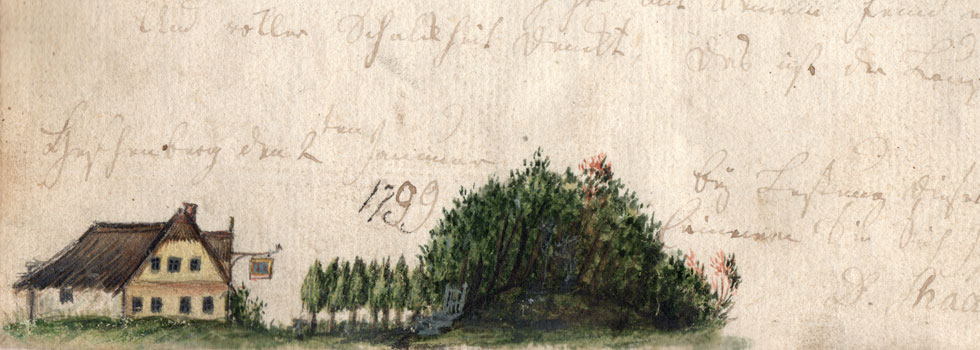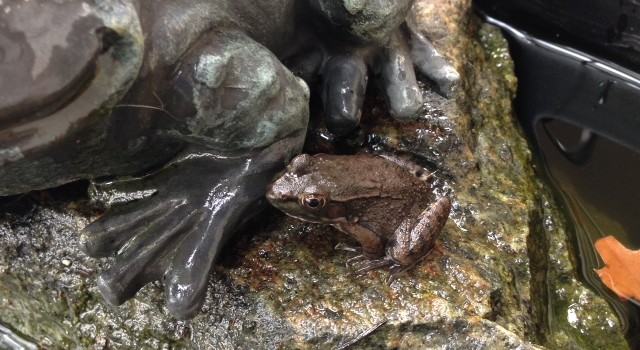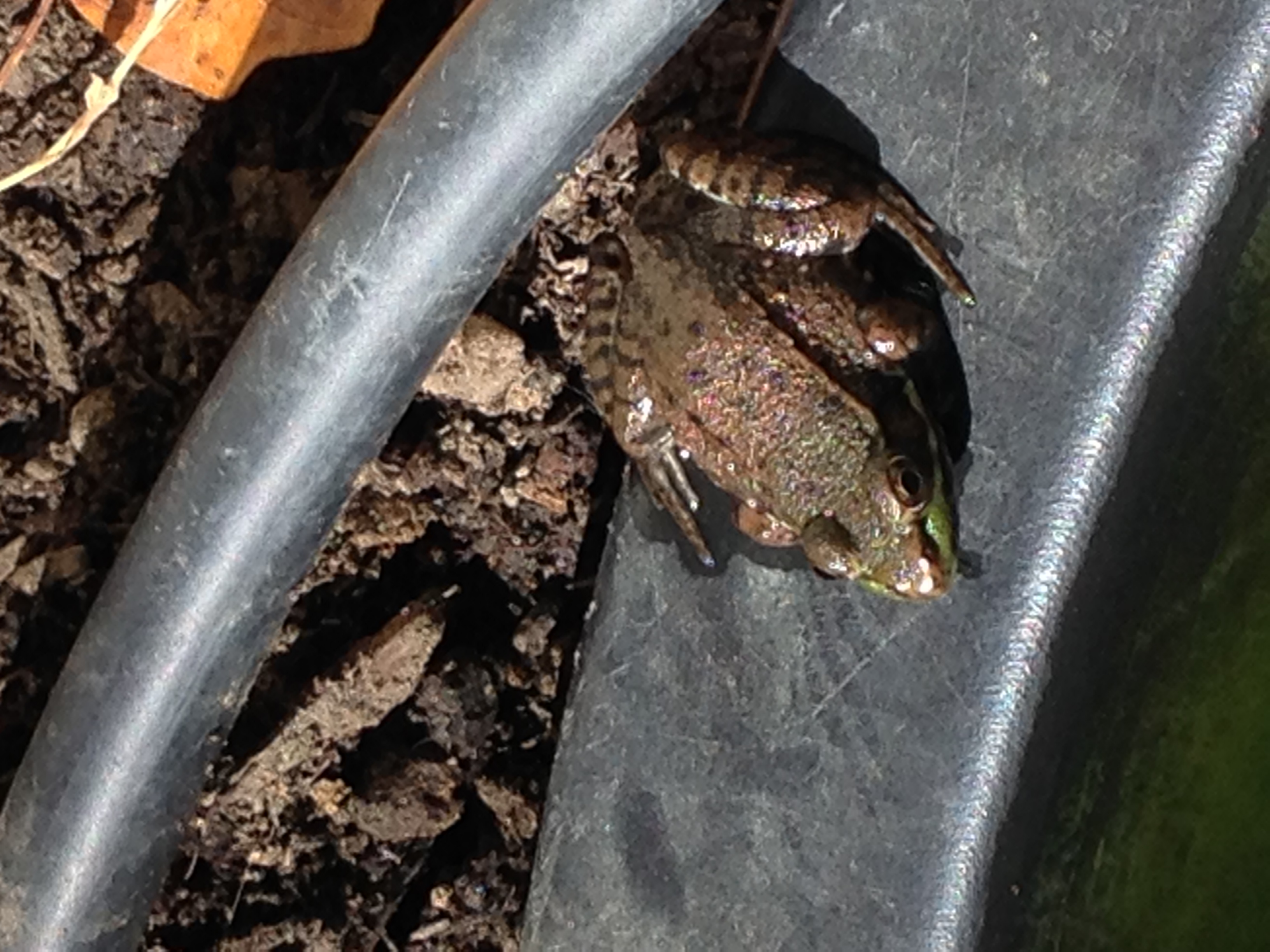The northern green frog (Rana clamitans melanota) is a subspecies of the green frog, Rana clamitans. Native to the eastern United States, it is a common aquatic frog that never strays far from the water, except during hibernation. It lives freshwater marshes, swamps, lakes, ponds and the banks of rivers. “They occupy a wide variety of habitats and appear to be less affected by development and degraded habitat than other amphibian species. In fact, some studies suggest that green frog populations have actually increased over the years and thus may benefit from manmade habitat alterations.” (http://www.uri.edu/cels/nrs/paton/LH_green_frog.html) In fact, at my house this frog dwells in a very small plastic pond with a few goldfish companions.
In winter, green frogs hibernate under water or underground in moist soils but may become active during a mild spell of winter weather. I’ll be interested to see if my little guy makes it through the winter in our tiny pond which freezes over completely when it’s cold.
Where did our little frog come from?
Apparently he walked to our pond from another wettish location, an action common to his species to reduce the population from the home area. Usually it’s just the juveniles who make this trip which makes sense given this guy’s size: he seems to be just a couple of inches long. In the pictures above, my 5-year-old daughter is holding him so that gives you a sense of scale. His adult size will be up to 3 1/2″ long.
Northern green frogs are quite often kept as pets and can live up to 10 years in captivity. (Hoping my kids don’t find this out.)
Our frog is brownish-green with a lighter underside and stripy legs. Males typically have bright yellow throats.
Will There Be More?
Our little pond can’t possibly support much of a population of these frogs but we’ll see. After the male sets up residence, he calls for females to join him using a mating call that sounds like the single note of a plucked banjo. If the female likes his territory, she’ll stick around to lay a clutch of about 3,000 eggs in a foamy clump that floats on the water’s surface. Which I have not seen in my little pond. Eggs hatch 3 to 7 days later. Tadpoles take anywhere from 3 to 22 months to transition into frogs. Males are territorial during the breeding season, and defend their territories using vocalizations, posturing, and physical combat. Mating starts in early spring and finishes up around late August.
Other Facts
- Green frogs are primarily nocturnal but are also active during the day.
- During non-breeding, green frogs are solitary.
- Northern green frogs have excellent vision and hearing. Their eyes bulge out giving them a wide range of vision that helps in catching prey, and their large external eardrums are sensitive.
- The male’s single vocal sac is internal. When it calls, the throat swells, but the vocal sac is not visible.
- On the male, the tympanum (eardrum) is larger than the eye.





Green frogs on walkabout. We live near the top of a hill where there was formerly a cornfield. The nearest water, a stream and a farm pond, is at least 600′ away horizontally and maybe 100′ vertically. We’d occasionally seen young green frogs on our lawn. After we put in a small pond, we regularly see green frogs, even having some breed in the pond. They’ve over-wintered as tadpoles and also as adults though survival of the adults is very iffy. Last year a young female bullfrog also made the journey, over-wintered successfully, and now has been joined by a second.